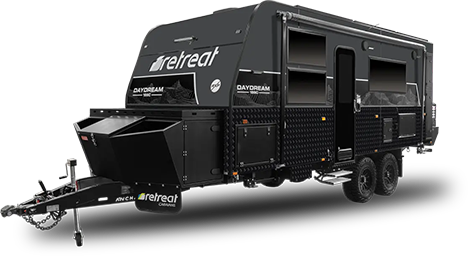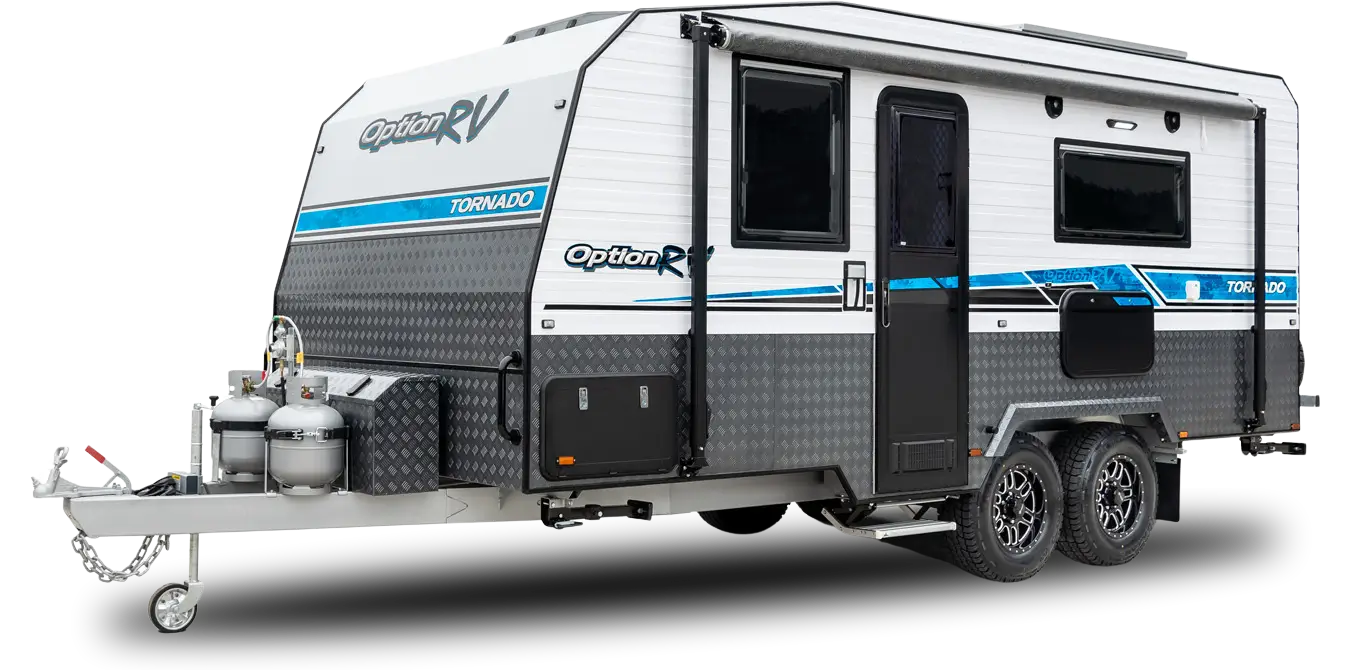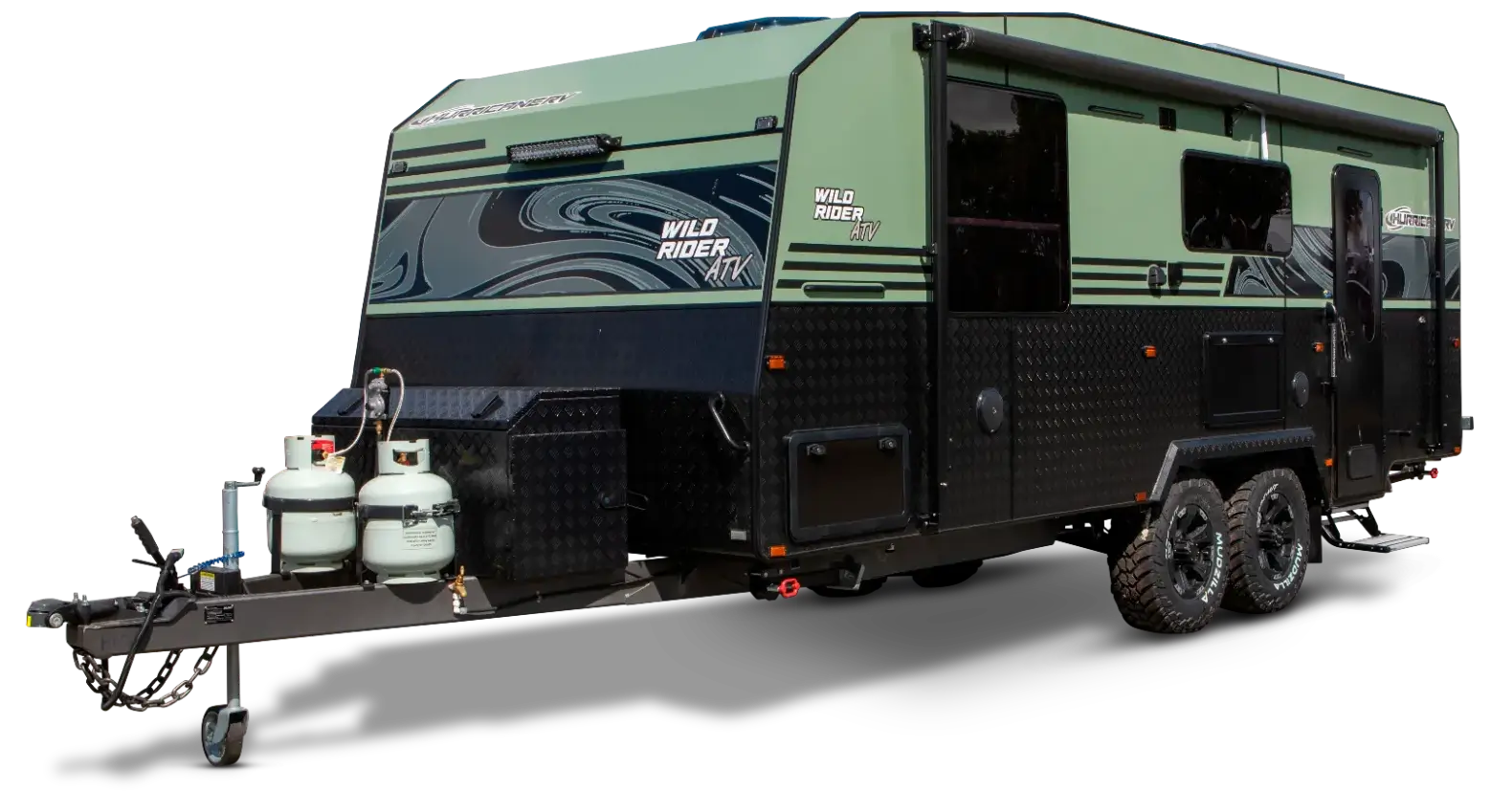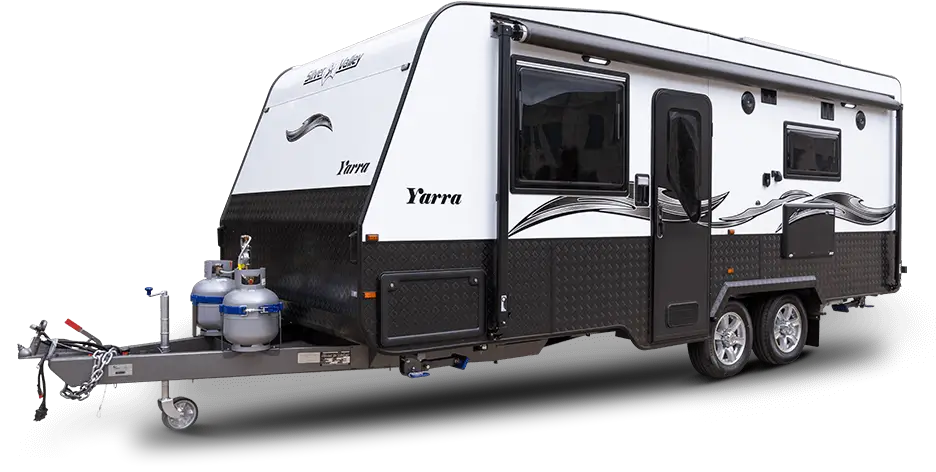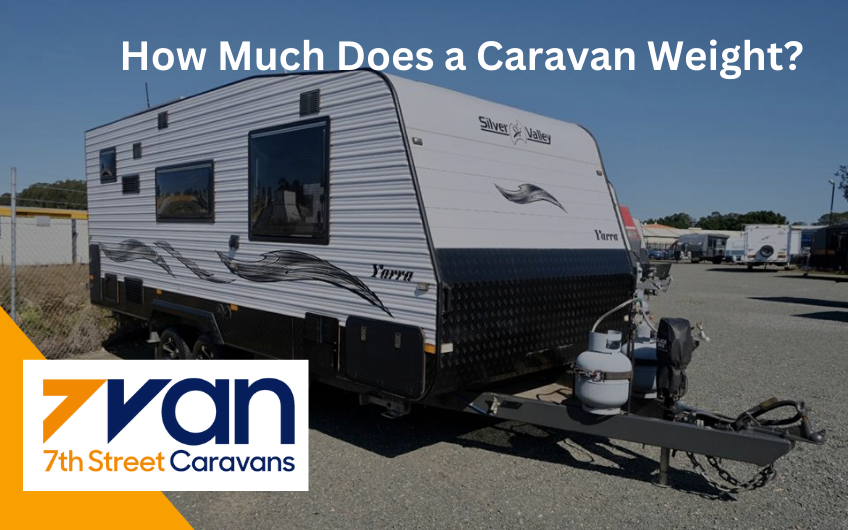
Caravan weight is one of the most misunderstood and overlooked aspects of caravan ownership — yet it’s one of the most important. Get it wrong, and you risk not only fines or insurance headaches, but serious safety issues on the road.
Whether you’re buying your first van or upgrading to something larger, understanding caravan weight isn’t just about numbers on a compliance plate. It’s about knowing what you can legally tow, how to load safely, and how to stay within the limits of your vehicle and van combination.
If you’re shopping for caravans in Heatherbrae, this article will give you the full picture of what a caravan really weighs — and what it all means for your travel setup.
What Is Tare Weight in a Caravan?
Tare weight refers to the caravan’s weight when it leaves the factory — empty and dry, with no water in the tanks, no gas bottles filled, and no personal items inside. It includes everything that’s permanently fitted by the manufacturer, such as appliances, cabinetry, and built-in furniture.
This figure is stamped on your caravan’s compliance plate and provides a starting point for calculating how much weight you can add. It’s important to note that some dealers add extras after the tare weight is recorded — like air cons, upgraded suspension, or solar panels — which means the actual starting weight can be higher.
Here’s why tare weight matters:
- It helps calculate your payload capacity
- It sets the baseline for compliance with your vehicle’s towing limits
- It informs what extras or mods you can add later without tipping the scales
Always weigh your caravan on a certified weighbridge to confirm its real-world tare if you’ve made modifications.
What Is ATM Weight?
ATM stands for Aggregate Trailer Mass. It’s the maximum legal weight your caravan is allowed to be when fully loaded. This includes:
- The caravan itself (tare weight)
- Water in tanks
- Gas bottles
- Food, clothes, tools, and all gear
- Any modifications or aftermarket add-ons
- Downward load on the tow ball
ATM is also stamped on your caravan’s compliance plate. It’s essentially the upper limit, and exceeding it is illegal — no matter how good your tow vehicle might be.
For example, if your caravan has a tare weight of 2,000kg and an ATM of 2,500kg, you have a payload of 500kg to play with. That might sound like a lot, but once you add water, batteries, outdoor gear and food, it goes quick.
What Is GVM and How Is It Different From ATM?
GVM refers to Gross Vehicle Mass — that’s the maximum loaded weight of your towing vehicle, not the caravan. It includes:
- The vehicle’s kerb weight
- Fuel, passengers, luggage
- Any accessories like bull bars or roof racks
- Tow ball download from the caravan
While GVM isn’t a caravan figure, it plays a huge role in safe towing. When your vehicle is loaded up with people and gear, plus has 200–300kg of caravan weight on the ball, it can easily exceed its GVM.
So while you’re focused on caravan weights like ATM and tare, don’t ignore your vehicle’s GVM. It’s all part of keeping your setup legal and safe.
What About GTM and Tow Ball Weight?
Let’s clear this up — GTM stands for Gross Trailer Mass. It’s the maximum weight that the caravan’s wheels support when the van is loaded, excluding the portion carried by the tow ball.
This figure matters when assessing axle ratings and weight distribution. GTM is usually around 150–250kg less than ATM because the tow ball supports that portion.
Tow ball weight is the downward force the caravan places on the hitch. Most caravans in Australia have a ball weight around 8–12% of their loaded weight. If your ATM is 2,500kg, your tow ball weight might be 200–250kg.
Getting this balance right is crucial. Too little ball weight and the van can sway dangerously. Too much, and you might overload your vehicle’s rear axle.
How Much Do Caravans Typically Weigh?
Here’s a rough guide to how much different types of caravans typically weigh:
- Small pop-top caravans (single axle):Tare: 900–1,200kgATM: 1,300–1,600kg
- Mid-sized caravans (16–19ft):Tare: 1,500–1,900kgATM: 2,000–2,500kg
- Full-sized caravans (20–22ft):Tare: 2,000–2,500kgATM: 2,500–3,200kg
- Off-road or hybrid caravans:Tare: 1,800–2,500kgATM: 2,800–3,500kg
Some custom off-road rigs push right up to the legal ATM limit of 3,500kg for trailers in Australia. If you’re looking to tow something that heavy, you’ll need a capable vehicle — think LandCruiser, RAM or similar.
Real-World Example: A Family Van Setup
Let’s say you’ve got a 21ft tandem axle van with:
- Tare: 2,400kg
- ATM: 3,000kg
- Payload: 600kg
You fill 2 x 95L water tanks (190kg), pack 80kg of food, 150kg of gear, 40kg in gas bottles, and add a 150kg bike rack system. That’s 610kg. You’re already pushing your payload limit.
Add a couple more items — maybe a second battery or awning upgrade — and you’ve exceeded your legal ATM.
It’s surprisingly easy to go over, especially on longer trips. That’s why weighbridge checks and conscious packing are essential.
What Happens If You Exceed Caravan Weight Limits?
Exceeding weight limits is not just illegal — it’s dangerous. Here’s what can happen:
- Increased risk of sway and rollovers
- Excessive wear on brakes, tyres and suspension
- Insurance may deny your claim if you’re overweight
- Police fines and demerit points
- Voided manufacturer warranties
If an accident occurs and you’re found to be over your ATM or GVM, you could be held liable — even if the crash wasn’t your fault.
It’s not worth the risk. Invest in a tow ball scale, use a certified weighbridge, and keep a log of your van’s loading weight.
Tips for Managing Caravan Weight
Managing caravan weight comes down to smart planning and regular checks. Here are a few tips that make a real difference:
- Use plastic or aluminium kitchenware over heavy ceramic or glass
- Limit water storage unless bush camping — fill up near your site
- Install lighter solar or battery systems where possible
- Store heavy items low and over the axles
- Remove unused gear before each trip — you’d be surprised what accumulates
Some travellers even keep a packing spreadsheet to help track what’s going in and what it weighs. Sounds nerdy, but it works.
Weight Distribution Systems: Do You Need One?
If your caravan is at the heavier end or you’re towing with a 4WD wagon rather than a ute, a weight distribution hitch can help balance the load. It redistributes weight across the tow vehicle’s axles, improving steering and braking performance.
It’s not always essential, but it does:
- Reduce sag at the rear of the tow vehicle
- Improve stability and control
- Lower the risk of sway on the highway
Talk to your local caravan dealer or towing expert before fitting one. Not all vans need them, but they’re a useful tool if your tow ball weight is heavy or your vehicle struggles with balance.
FAQs
What is the average weight of a caravan in Australia?
Most standard full-sized caravans in Australia weigh between 2,000kg and 3,000kg ATM, depending on layout, materials and extras. Lightweight pop-tops or smaller single axle vans may weigh 1,200–1,800kg. Off-road hybrids and luxury touring vans can reach up to 3,500kg. The average sits around 2,500kg ATM — a good middle ground for most families using midsize to large SUVs or utes for towing. Always check the specific tare and ATM on your compliance plate, as weights vary widely.
How can I check if my caravan is overweight?
The most accurate way is to take your caravan (loaded as if ready for travel) to a certified public weighbridge. You can weigh it with and without the tow vehicle to get separate figures for ATM, GTM and tow ball download. Portable tow ball scales can also help you monitor ball weight. It’s good practice to weigh your van once per year, especially if you’ve added gear or changed your setup. Overweight caravans may void insurance and can be flagged at roadside inspections.
What’s the difference between tare and ATM?
Tare weight is the caravan’s empty weight as supplied by the manufacturer, without water, gas or luggage. ATM is the maximum allowable loaded weight of the caravan, including everything onboard and the downward pressure on the tow ball. The difference between tare and ATM is your payload — how much gear, water and extras you can carry. It’s important to know both figures to avoid exceeding your limits and to ensure safe towing.
Is it legal to tow a caravan over 3,500kg?
No, 3,500kg ATM is the maximum trailer weight allowed under standard Australian regulations for light vehicles. Anything over that requires heavy vehicle classification and commercial licensing. If your dream van is pushing the limit, you’ll need a capable tow vehicle like a RAM 2500 or Chevy Silverado that’s engineered to handle that weight — and even then, the caravan must still be legally plated at or under 3,500kg.
Does adding accessories affect my caravan’s weight?
Absolutely. Every aftermarket accessory — from solar panels to upgraded suspension or larger fridges — adds weight. Many of these are fitted after the tare weight is recorded, which means your usable payload shrinks. For example, a 60kg air conditioner, 100Ah lithium battery or toolbox might not seem like much individually, but together they quickly eat into your allowance. If you’re planning serious mods, get your van reweighed and reassess your payload capacity.
Weigh It Right, Travel Safe
Knowing your caravan’s weight isn’t just about staying legal — it’s about travelling confidently. From safe braking to fuel efficiency and comfort on the road, weight impacts every part of your trip.
Before you pack up and hit the highway, do the legwork. Read your compliance plate, weigh your setup, and plan smart. That way, you won’t get caught out — whether at a weighbridge or halfway through the outback.
Start your journey with confidence — visit 7th Street Caravans or give our team a call on 02 4012 6009 for friendly, local advice.

